Christmas Markets are by far one of my favorite places to try new festive foods and discover the culinary style of a new country; they are the perfect place to find traditional specialties, tasty dishes, and comforting foods. A mug of Gluhwein and a gingerbread cookie are not just a way to keep the cold weather away but also a cultural experience because behind most of the festive traditional foods, there’s a story to be told and a history to be discovered, offering fascinating insights into past.
Here’s the list I’ve compiled with some of the best traditional foods & drinks to try at a German Christmas Market.
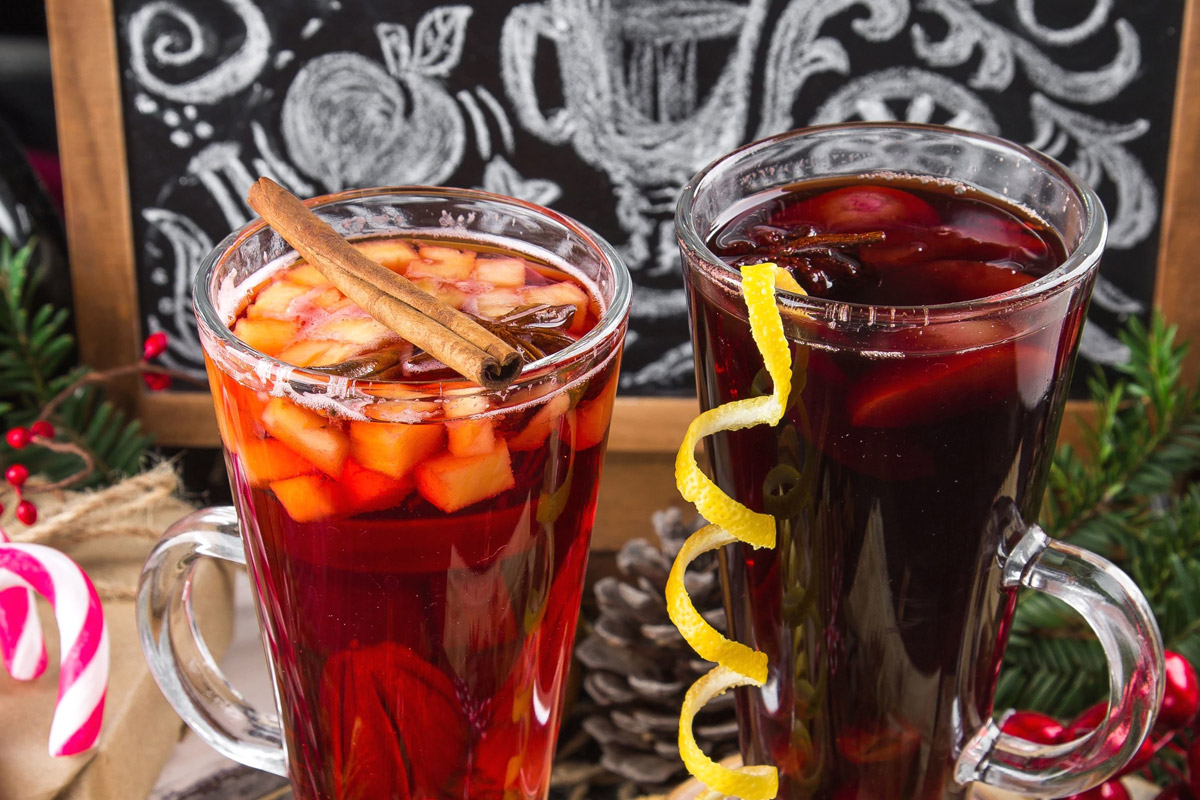
Glühwein (Mulled wine), Kinderpunsch, Eierpunsch, and Lumumba
When visiting a Christmas Market, a mug with Glühwein is the best remedy for the chilly weather. It is the most popular drink during Christmas in all of Germany’s Christmas Markets. Red wine (and sometimes, white wine) is heated and spiced with condiments like cinnamon, cloves, anise, and vanilla. Glühwein “mit Schuss,” one of its variations, is the classical mulled wine with a shot of rum or liquor. Every Christmas Market has a specifically decorated mug, different from year to year. When you buy a Glühwein, you can return the mug and get your deposit back (1 – 3 euros) or keep it as a souvenir.
READ MORE: 10 Festive Christmas Trees I love this year
Feuerzangenbowle is similar to mulled wine, with sugar caramelized by burning rum. The comedy “Die Feuerzangenbowle” (1943) made this drink famous among Germans, and now it’s a tradition to gather with your friends before Christmas or New Year, drink a mug of Feuerzangenbowle, and watch the iconic film.
For children (and not only), there’s also Hot punch, a non-alcoholic version of Glühwein, made with fruits, lemon, and honey. It goes perfectly with gingerbread cookies.
Eierpunsch: egg-based punch similar to eggnog, made with egg yolks, sugar, white wine, and vanilla.
Lumumba: hot chocolate with a shot of rum.
READ MORE: Christmas in New York – 20 things to do
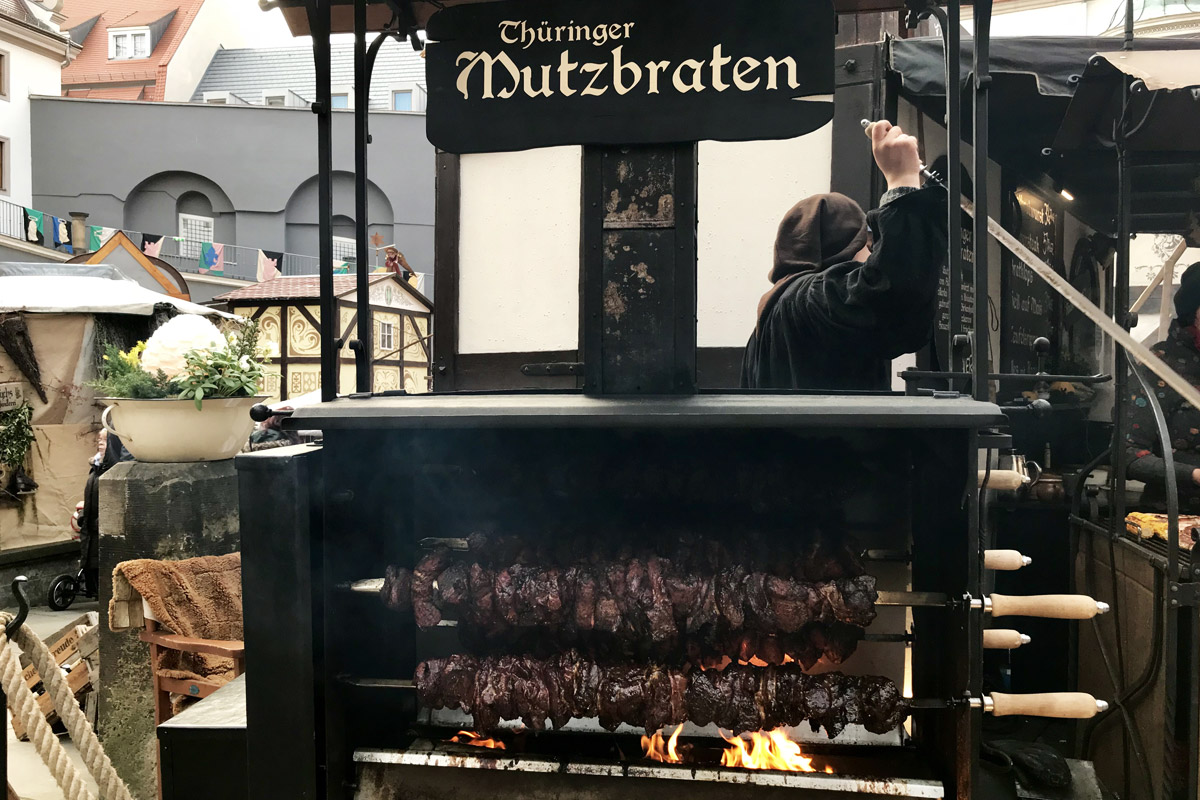
Meat dishes: Bratwurst, Schweinshaxe, and Mutzbraten
As no German Christmas Market would be complete without sausages and other meat dishes, you should try one of the specialties Germans are very proud of:
Bratwurst – the traditional German sausage made with beef, veal, or pork, usually served in a bun with mustard or ketchup;
Schweinshaxe – roasted pork knuckle, served with “Sauerkraut” (sour cabbage);
Mutzbraten – slowly roasted spiced pork meat.

Kartoffelpuffer
Kartoffelpuffer (also known as Reibekuchen and Kartoffelpfannkuchen) is a potato pancake, traditionally served with apple sauce. They can be salty or sweet, served as a main course or as a dessert. Germans eat Kartoffelpuffer with liverwurst, smoked salmon, and sour cream, or just as they are, with sugar on top. Delicious on a cold winter day with a mug of Gluhwein!
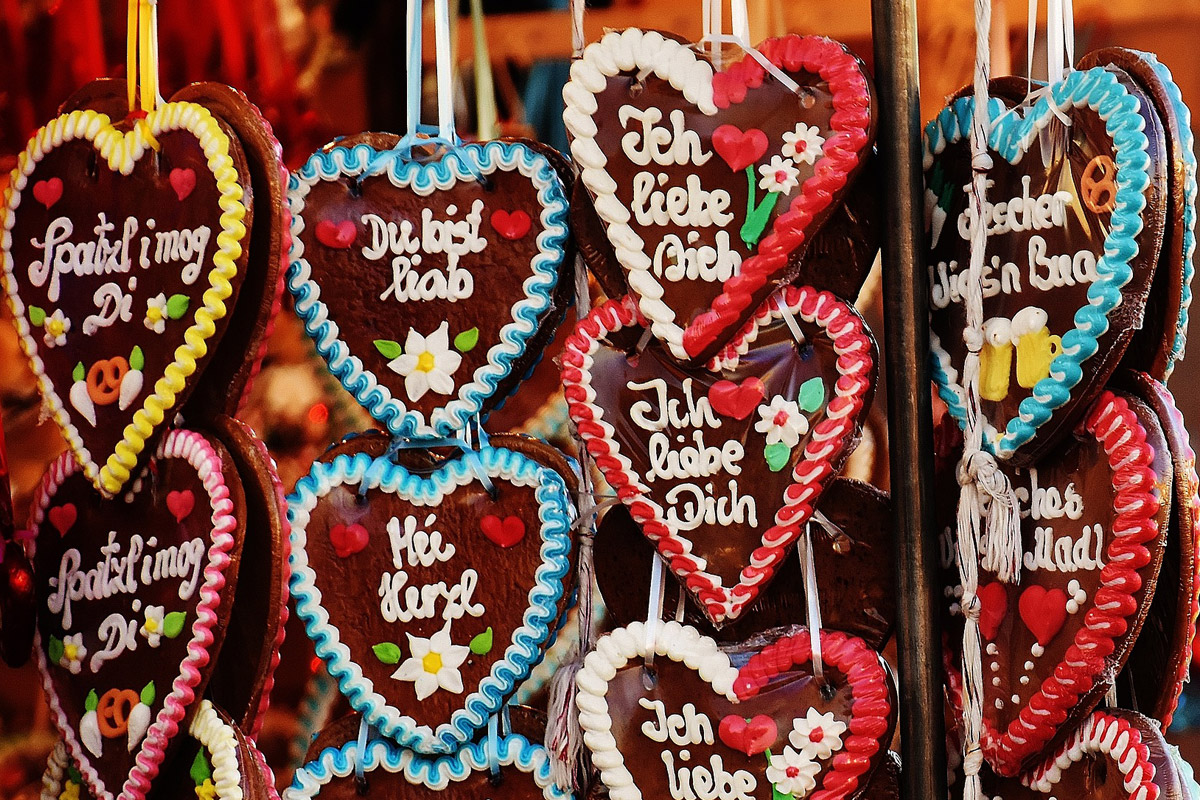
Lebkuchen
The traditional German Gingerbread can be found everywhere at Christmas Markets. It comes in different shapes, with or without colored icing on top, and it’s a Christmas symbol here in Germany. There are more types of Lebkuchen: Lebkuchen Herzen – Gingerbread Hearts, Hexenhäusel – Witch’s house, and, the most famous, Nürnberger Lebkuchen – a sortiment that is traditionally manufactured only in Nürnberg and contains up to 40% nuts.
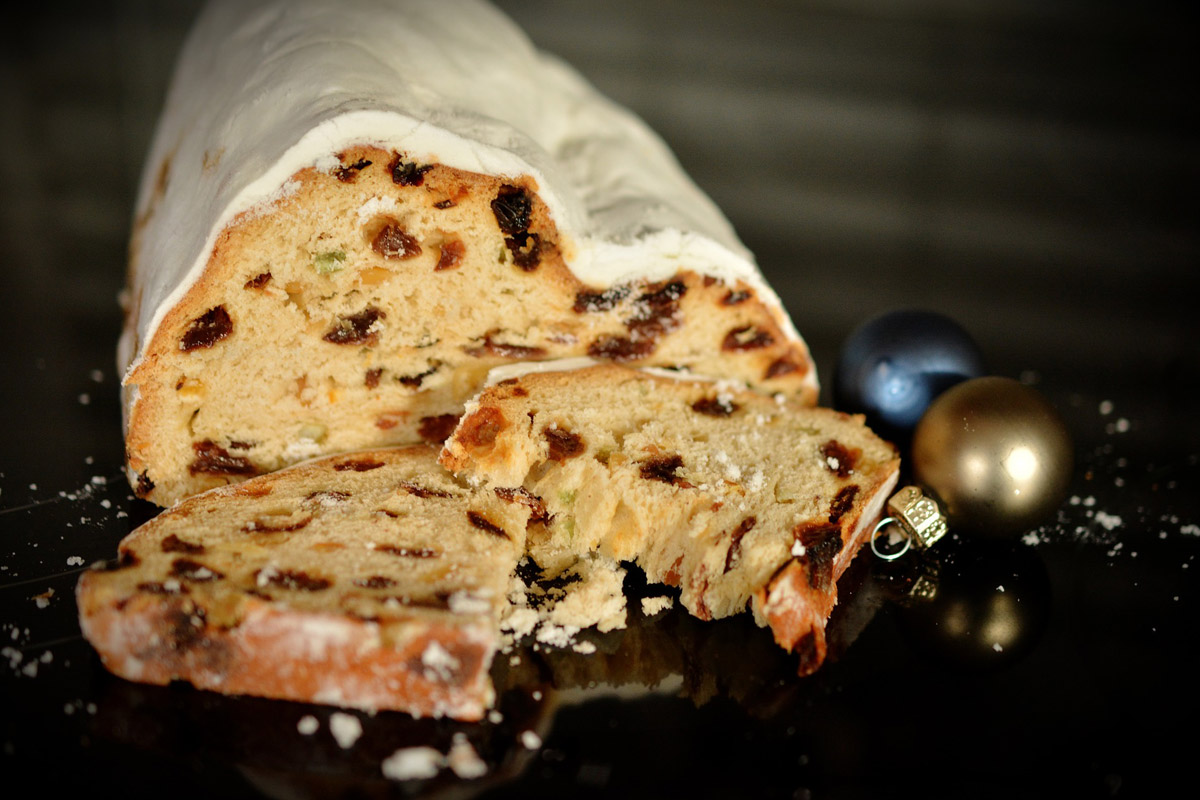
Christstollen – Stollen Cake
The emblematic fruitcake of Dresden became, over the years, another Christmas symbol in Germany. Made with dried or candied fruits and sometimes with a marzipan core and dusted with powdered sugar, Christstollen has a long history. In 1474 the first Stollen was baked, made with oil and not with butter, as today. And because the Advent time, in medieval Saxony, was a period of fasting, the bakers were not allowed to use butter, and therefore the cakes were hard and tasteless. It was 1490, Pope Innocent VIII granted the use of butter, but the bakers should pay a fee. Only when Saxony became Protestant the ban on butter was removed.
There are many types of Stollen – with dried fruits, with marzipan, with both fruits and marzipan, with almonds, with poppy seeds; the most famous Stollen is the Dresden Stollen, called Striezel. The main Christmas Market in Dresden is called Striezelmarkt after this so loved Christmas sweet.
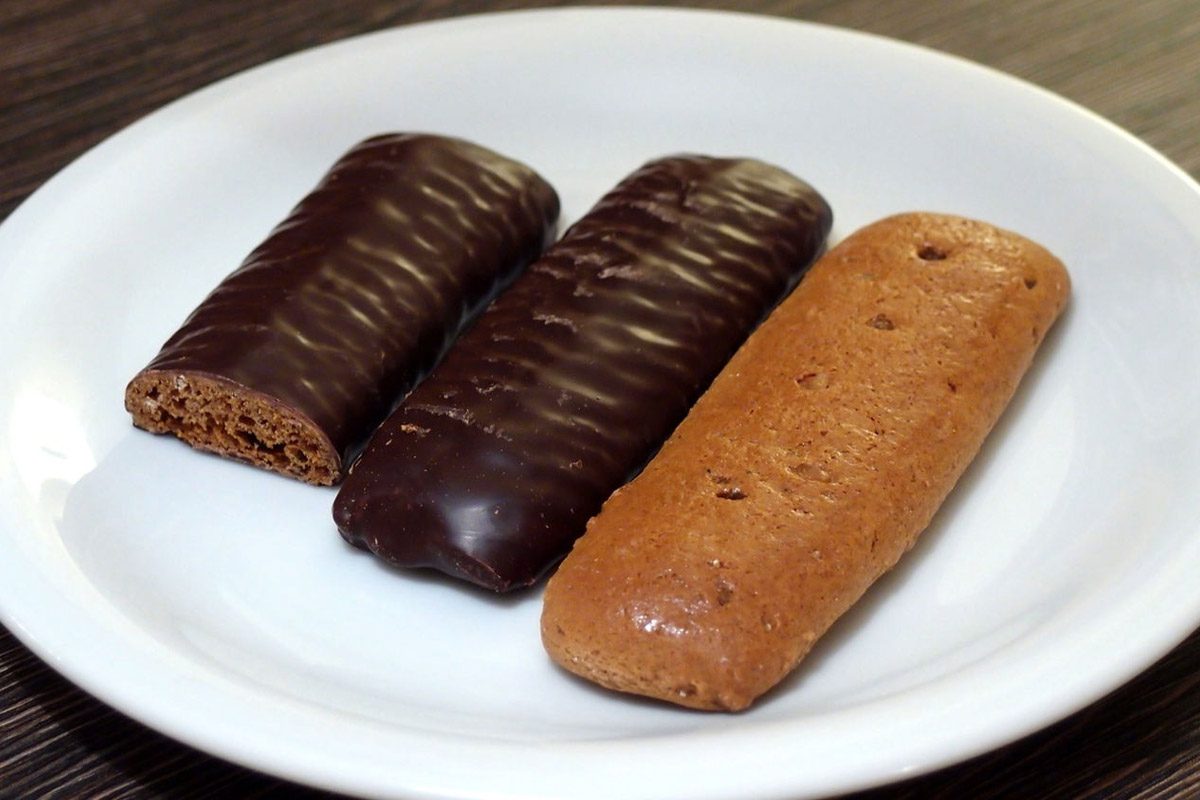
Aachener Printen
Aachener Printens are similar to Gingerbread biscuits, and they are produced only in Aachen, the German Sweet Capital (thanks to their special biscuits and chocolates). It’s been said that Printen originated from the city of Dinant in Belgium and was brought to Aachen in the 15th century by the immigrant copper artisans. In the beginning, the biscuits were sweetened with honey, and due to the mix of spices and honey, they were also sold in pharmacies. But later on, honey was replaced with sugar beets, and this recipe is still in use today.
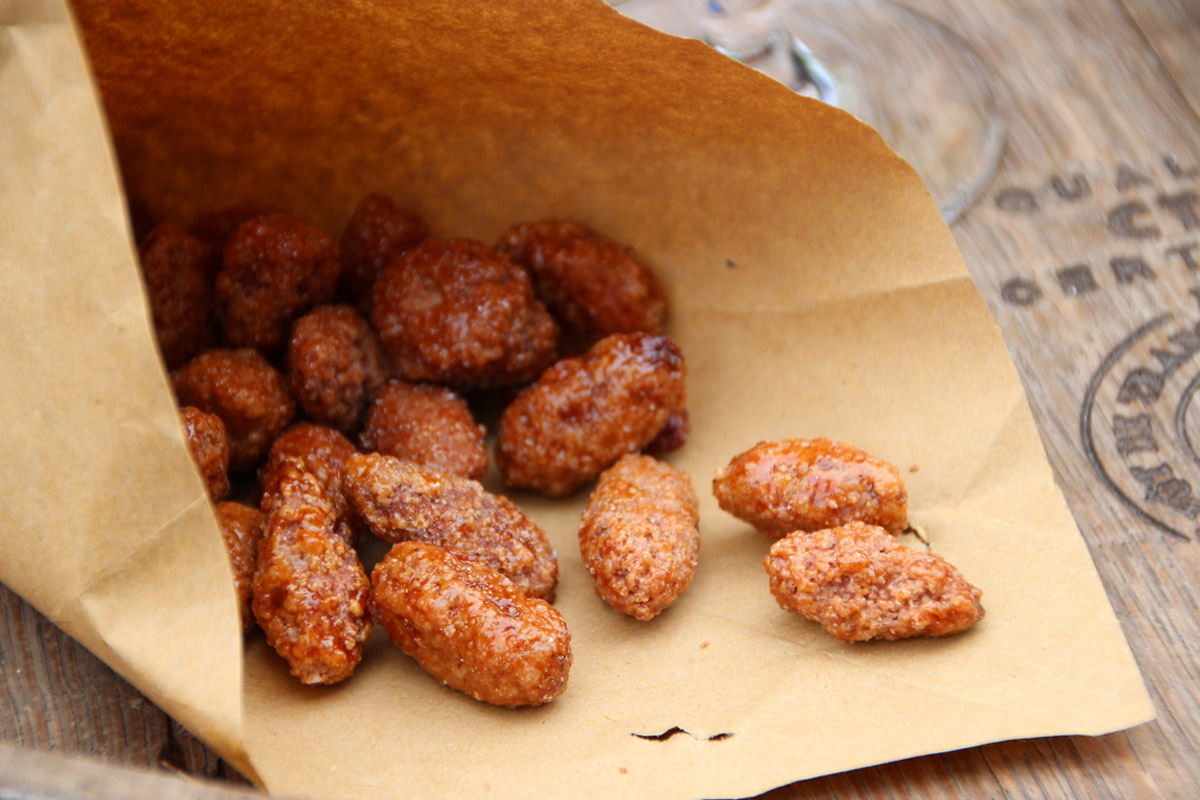
Gebrannte Mandeln
There’s no Christmas market without candied almonds (Gebrannte Mandeln)! For me, the smell of roasted and sugar-coated almonds is how winter should smell. You can choose from so many flavors – vanilla, caramel, amaretto, cinnamon, Nutella. Served in paper cones, Gebrannte Mandeln is a delicious Christmas treat not to be missed.
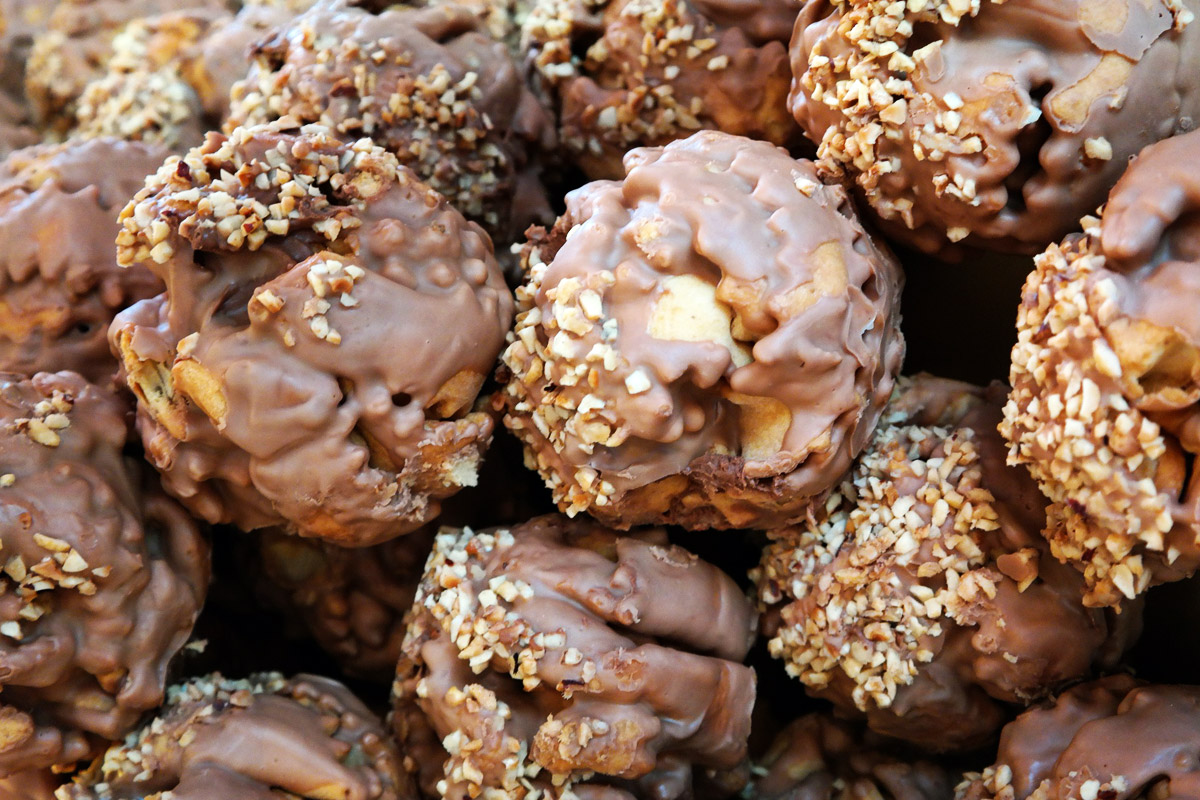
Schneeball
Schneeballen are a culinary trademark for Rothenburg ob der Tauber (home of one of the most beautiful Christmas markets in Germany). The snowball is made from strips of pastry, fried, and covered with icing sugar or chocolate. This typical Christmas sweet has over 300 years, and in the beginning, it was baked just for weddings and special occasions.
Schneebal Recipe
Have you tried one of these dishes? Let me know in the comments below!
Pin for later:
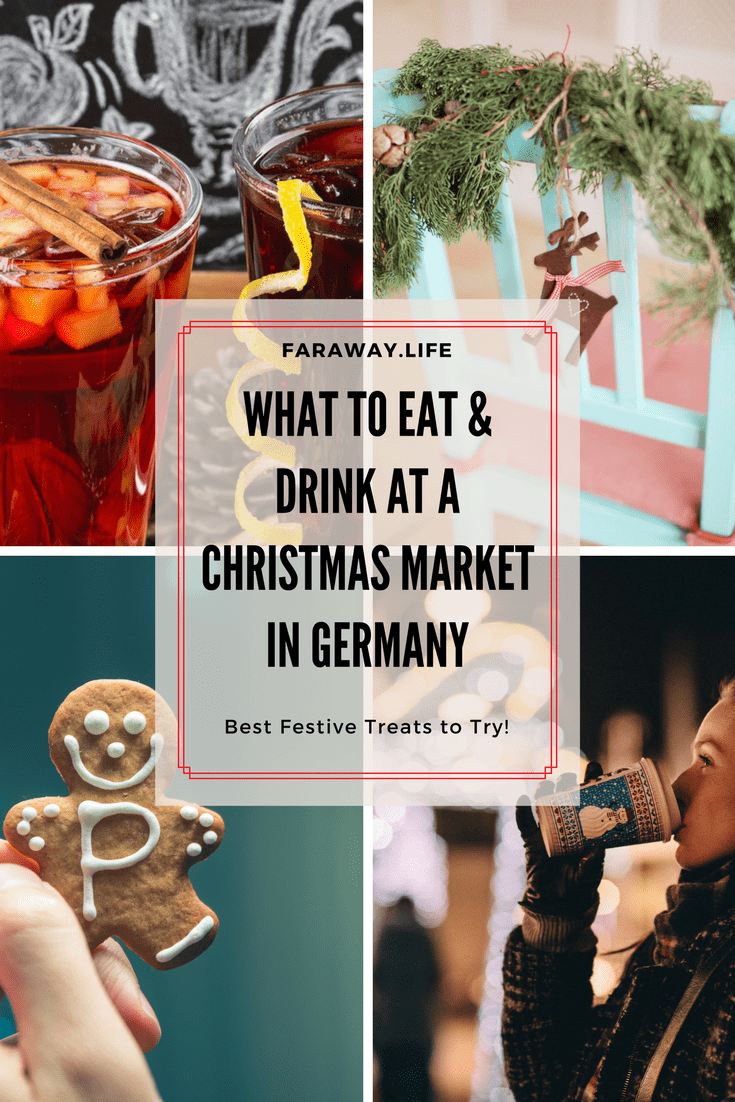
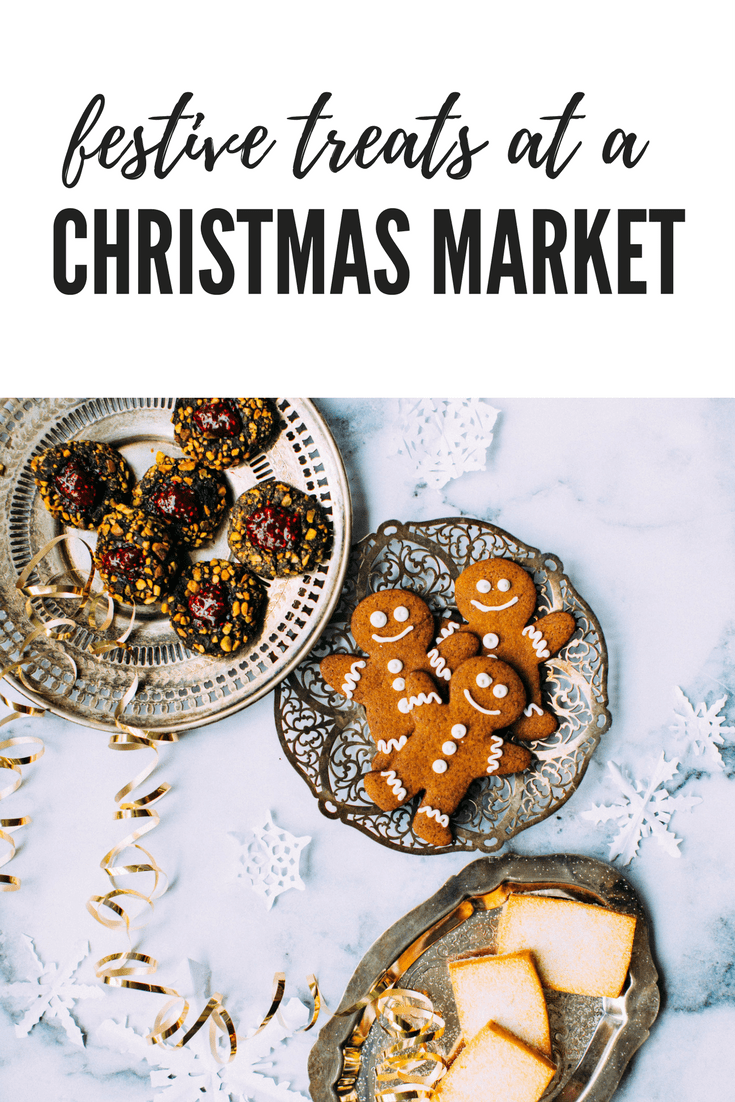


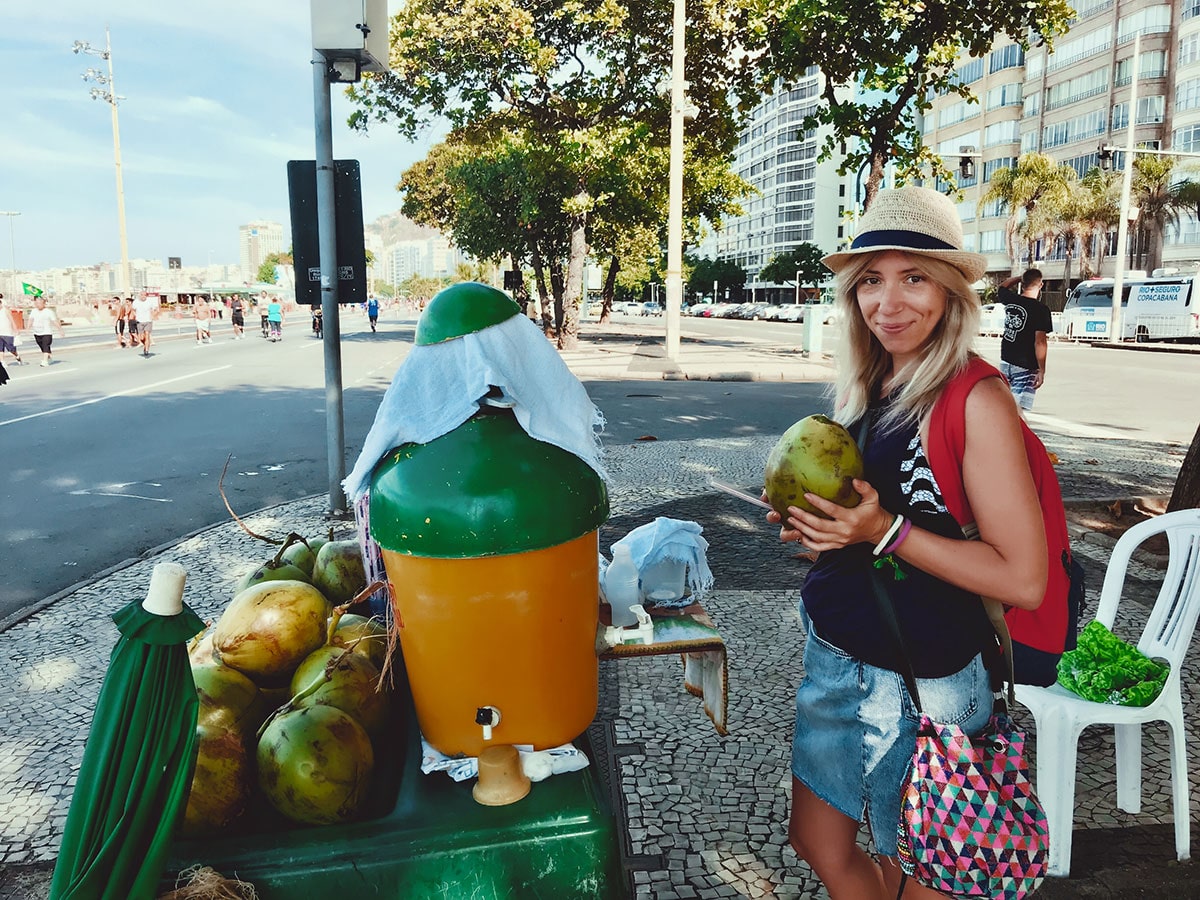
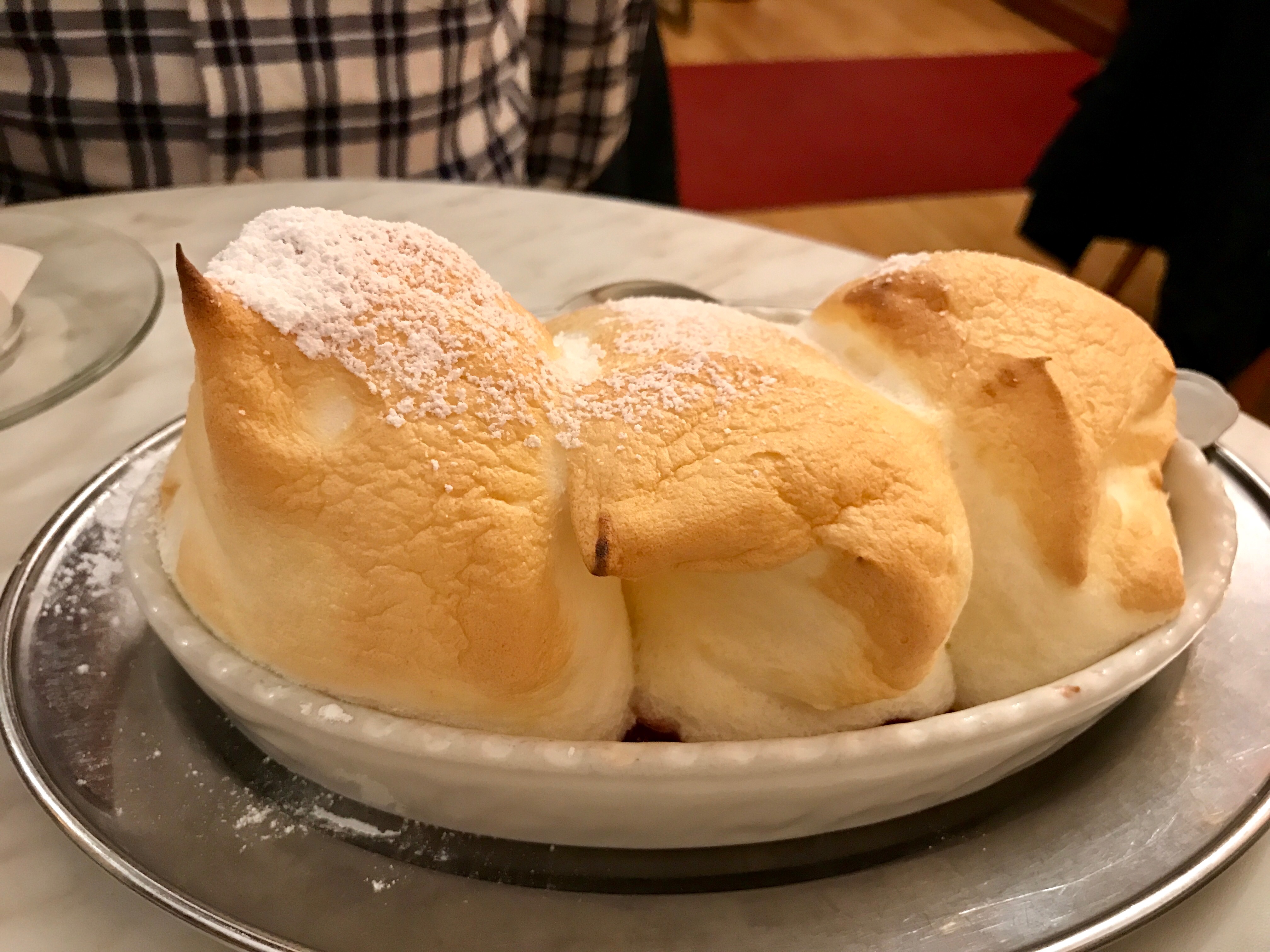
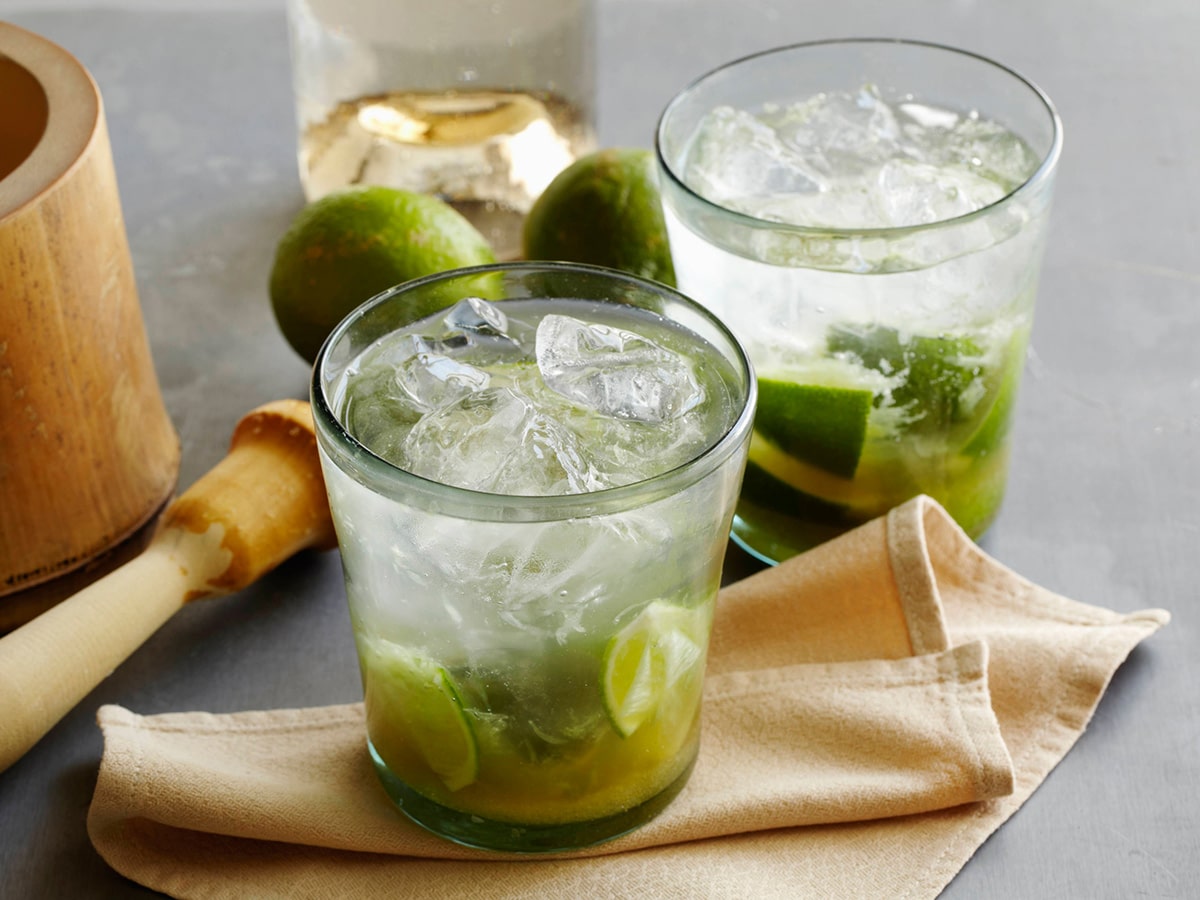
1 Comment
The Top 10 things to see in Nuremberg – faraway.life
21 January 2018 at 17:37[…] the unofficial capital of Franconia. Famous for many things – the old medieval castle, the gingerbread, and the Christmas Market – Nuremberg is, above all these, a lovely place stuffed with […]